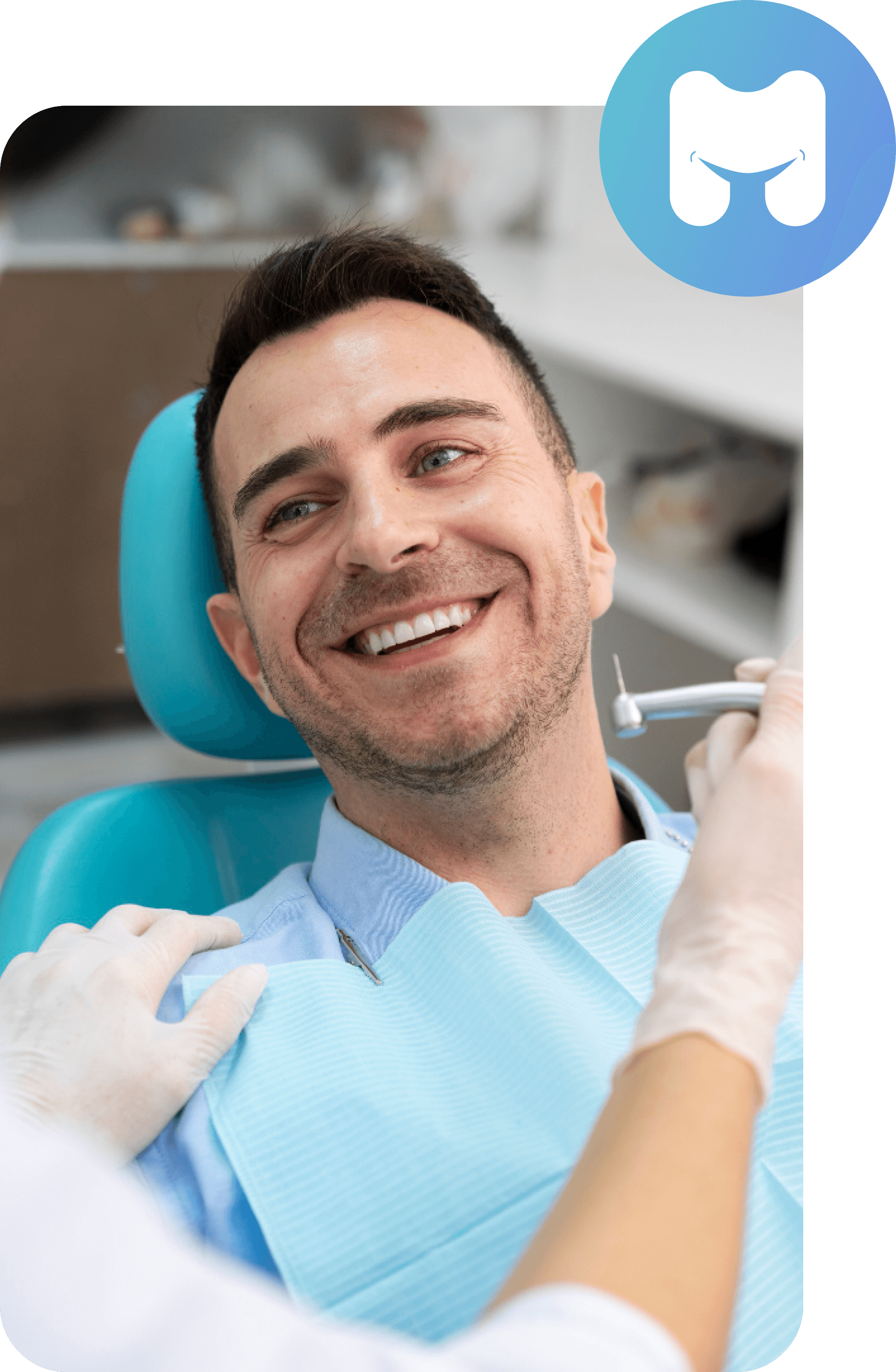
Say Goodbye to Tooth Pain Hello to Renewed Comfort
Say Goodbye to Tooth Pain Hello to Renewed Comfort
Say Goodbye to Tooth Pain Hello to Renewed Comfort
Say Goodbye to Tooth Pain Hello to Renewed Comfort
Gentle and effective Root Canal Therapy at Metro Pointe Dental
Gentle and effective Root Canal Therapy at Metro Pointe Dental
Pain-Free Smiles Metro Pointe Root Canals
Pain-Free Smiles Metro Pointe Root Canals
Pain-Free Smiles Metro Pointe Root Canals
Pain-Free Smiles Metro Pointe Root Canals




Your Ally in the Fight Against Tooth Pain and Infection
Your Ally in the Fight Against Tooth Pain and Infection
Your Ally in the Fight Against Tooth Pain and Infection
Your Ally in the Fight Against Tooth Pain and Infection




Root canal therapy is a safe and effective procedure that relieves tooth pain and saves your natural tooth from extraction. When your tooth's inner pulp becomes infected or inflamed, it can cause severe discomfort. Our gentle root canal treatment removes the infected pulp, cleans the tooth, and seals it to prevent further damage.
Root canal therapy is a safe and effective procedure that relieves tooth pain and saves your natural tooth from extraction. When your tooth's inner pulp becomes infected or inflamed, it can cause severe discomfort. Our gentle root canal treatment removes the infected pulp, cleans the tooth, and seals it to prevent further damage.
Root canal therapy is a safe and effective procedure that relieves tooth pain and saves your natural tooth from extraction. When your tooth's inner pulp becomes infected or inflamed, it can cause severe discomfort. Our gentle root canal treatment removes the infected pulp, cleans the tooth, and seals it to prevent further damage.
Root canal therapy is a safe and effective procedure that relieves tooth pain and saves your natural tooth from extraction. When your tooth's inner pulp becomes infected or inflamed, it can cause severe discomfort. Our gentle root canal treatment removes the infected pulp, cleans the tooth, and seals it to prevent further damage.
Don't Ignore the Whisper, Your Toothache Might Be Calling for Help
Don't Ignore the Whisper, Your Toothache Might Be Calling for Help
Don't Ignore the Whisper, Your Toothache Might Be Calling for Help
Don't Ignore the Whisper, Your Toothache Might Be Calling for Help
Root canal therapy might be necessary if you're experiencing
Root canal therapy might be necessary if you're experiencing
Root canal therapy might be necessary if you're experiencing
Severe tooth pain or sensitivity
Severe tooth pain or sensitivity
Swelling or tenderness in your gums
Swelling or tenderness in your gums
A persistent or recurring pimple on the gums
A persistent or recurring pimple on the gums
Darkening or discoloration of a tooth
Darkening or discoloration of a tooth
Your Root Canal Experience
Comfort and Precision
Your Root Canal Experience
Comfort and Precision
Your Root Canal Experience
Comfort and Precision
Consultation & Diagnosis
Consultation & Diagnosis
Consultation & Diagnosis
We'll assess your tooth, take X-rays, and discuss your treatment options.
We'll assess your tooth, take X-rays, and discuss your treatment options.
We'll assess your tooth, take X-rays, and discuss your treatment options.
Restoration
Restoration
Restoration
In many cases, a dental crown is recommended to protect the treated tooth and restore its full function.
In many cases, a dental crown is recommended to protect the treated tooth and restore its full function.
In many cases, a dental crown is recommended to protect the treated tooth and restore its full function.
Pulp Removal & Cleaning
Pulp Removal & Cleaning
Pulp Removal & Cleaning
We'll carefully remove the infected pulp and thoroughly clean the canals inside the tooth.
We'll carefully remove the infected pulp and thoroughly clean the canals inside the tooth.
We'll carefully remove the infected pulp and thoroughly clean the canals inside the tooth.
Pain Management
Pain Management
Pain Management
We prioritize your comfort and will numb the area around the tooth for a pain-free procedure.
We prioritize your comfort and will numb the area around the tooth for a pain-free procedure.
We prioritize your comfort and will numb the area around the tooth for a pain-free procedure.
Filling & Sealing
Filling & Sealing
Filling & Sealing
The cleaned canals are filled and sealed to prevent further infection.
The cleaned canals are filled and sealed to prevent further infection.
The cleaned canals are filled and sealed to prevent further infection.







Save Your Tooth, Save Your Smile
Save Your Tooth, Save Your Smile
Save Your Tooth, Save Your Smile
Save Your Tooth, Save Your Smile
We'll assess your tooth, take X-rays, and discuss your treatment options
We'll assess your tooth, take X-rays, and discuss your treatment options
We'll assess your tooth, take X-rays, and discuss your treatment options
Infection Prevention
Infection Prevention
Infection Prevention
Infection Prevention
Stops the spread of infection to surrounding teeth and bone.
Stops the spread of infection to surrounding teeth and bone.
Stops the spread of infection to surrounding teeth and bone.
Stops the spread of infection to surrounding teeth and bone.
Restored Function
Restored Function
Restored Function
Restored Function
Your tooth can function normally for eating and speaking.
Your tooth can function normally for eating and speaking.
Your tooth can function normally for eating and speaking.
Your tooth can function normally for eating and speaking.
Pain Relief
Pain Relief
Pain Relief
Pain Relief
Eliminates the source of your toothache and discomfort.
Eliminates the source of your toothache and discomfort.
Eliminates the source of your toothache and discomfort.
Eliminates the source of your toothache and discomfort.
A Healthy Smile
A Healthy Smile
A Healthy Smile
A Healthy Smile
A root canal can help maintain the aesthetics of your smile.
A root canal can help maintain the aesthetics of your smile.
A root canal can help maintain the aesthetics of your smile.
A root canal can help maintain the aesthetics of your smile.
Natural Tooth Preservation
Natural Tooth Preservation
Natural Tooth Preservation
Natural Tooth Preservation
This avoids the need for extraction and allows you to keep your natural tooth.
This avoids the need for extraction and allows you to keep your natural tooth.
This avoids the need for extraction and allows you to keep your natural tooth.
This avoids the need for extraction and allows you to keep your natural tooth.
Frequently Asked Questions
Frequently Asked Questions
Your Questions Answered
Your Questions Answered
Is root canal therapy painful?
Is root canal therapy painful?
Is root canal therapy painful?
Is root canal therapy painful?
How long does root canal therapy take?
How long does root canal therapy take?
How long does root canal therapy take?
How long does root canal therapy take?
Will I need a crown after a root canal?
Will I need a crown after a root canal?
Will I need a crown after a root canal?
Will I need a crown after a root canal?
How successful is root canal therapy?
How successful is root canal therapy?
How successful is root canal therapy?
How successful is root canal therapy?
What happens if I don't get root canal therapy?
What happens if I don't get root canal therapy?
What happens if I don't get root canal therapy?
What happens if I don't get root canal therapy?
Hear from Our Happy Patients
“I’ve been going to Metropoint dental for 10+ years and Sandy has always been so nice to my family and I!
- Hannah Parnell
“Dr. Leung is a life saviour! His hands work like magic! I had the smoothest extraction in just 20 mins! He is extremely humble and makes you feel very comfortable.
- Shreyashi Sanyal
“My colleague and I both see Dr. Jeremy Leung for our dental care. He is professional, honest and gentle, and we trust his expertise and advice.
- Samantha P
“Me and my family have been seeing Dr. Leung for almost 13 years. I always found him to be honest, knowledgeable, with a good “bedside manner”.
- Dr. Cristian Toma
“I’ve been coming here for over two decades. This is my go to for my dentist work. My family would like to come back to here but they moved a bit far away to come here. My sister has come in from the island just so the doctor can repair her teeth.
- Mike Pierre
Hear from Our Happy Patients
“I’ve been going to Metropoint dental for 10+ years and Sandy has always been so nice to my family and I!
- Hannah Parnell
“Dr. Leung is a life saviour! His hands work like magic! I had the smoothest extraction in just 20 mins! He is extremely humble and makes you feel very comfortable.
- Shreyashi Sanyal
“My colleague and I both see Dr. Jeremy Leung for our dental care. He is professional, honest and gentle, and we trust his expertise and advice.
- Samantha P
“Me and my family have been seeing Dr. Leung for almost 13 years. I always found him to be honest, knowledgeable, with a good “bedside manner”.
- Dr. Cristian Toma
“I’ve been coming here for over two decades. This is my go to for my dentist work. My family would like to come back to here but they moved a bit far away to come here. My sister has come in from the island just so the doctor can repair her teeth.
- Mike Pierre
Hear from Our Happy Patients
“I’ve been going to Metropoint dental for 10+ years and Sandy has always been so nice to my family and I!
- Hannah Parnell
“Dr. Leung is a life saviour! His hands work like magic! I had the smoothest extraction in just 20 mins! He is extremely humble and makes you feel very comfortable.
- Shreyashi Sanyal
“My colleague and I both see Dr. Jeremy Leung for our dental care. He is professional, honest and gentle, and we trust his expertise and advice.
- Samantha P
“Me and my family have been seeing Dr. Leung for almost 13 years. I always found him to be honest, knowledgeable, with a good “bedside manner”.
- Dr. Cristian Toma
“I’ve been coming here for over two decades. This is my go to for my dentist work. My family would like to come back to here but they moved a bit far away to come here. My sister has come in from the island just so the doctor can repair her teeth.
- Mike Pierre
Contact Us
We Can't Wait to Hear from You!
Contact Us
We Can't Wait to Hear from You!
Contact Us
We Can't Wait to Hear from You!
Contact Us
We Can't Wait to Hear from You!
Contact
info@metropointedental.com
Unit #140
4603 Kingsway
Burnaby, BC V5H 4M4
Connect with us on whatsapp
Contact
info@metropointedental.com
Unit #140
4603 Kingsway
Burnaby, BC V5H 4M4
Connect with us on whatsapp
Contact
info@metropointedental.com
Unit #140
4603 Kingsway
Burnaby, BC V5H 4M4
Connect with us on whatsapp



